TEAM



TEAM
A growing international team
The ISRA program is being executed by a growing international team of scientists, conservationists, policy-makers, and marine protected areas practitioners committed to advancing our knowledge on habitats that are critical for conserving sharks, rays, and chimaeras. Team members contribute their expertise to support our efforts in identifying and delineating ISRAs around the world.
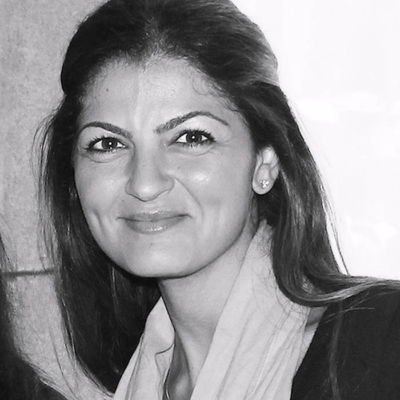
Dr Rima Jabado
Rima Jabado is the Deputy Chair of the IUCN Species Survival Commission (SSC) and Chair of the IUCN SSC Shark Specialist Group. As a scientist and conservationist, she has spent over 20 years developing and working on conservation initiatives globally. She has extensive experience as a field researcher, director for non-profit organizations, government official, and project manager. Her work centers around bridging the gap between science and policy to ensure issues such as bycatch, threatened species conservation, and illegal trade are tackled. Her primary focus has been investigating shark and ray fisheries and trade and combines field work with outreach and advocacy to mobilize and provide policy solutions at the government and community levels. She has led or supervised projects in over 15 countries and her research has been instrumental in influencing decision makers to implement meaningful measures for the protection of species across a range of fisheries. She is now leading the Important Shark and Ray Areas (ISRA) project to ensure sharks, rays, and chimaeras are considered in area-based management initiatives around the world. Rima is a member of the IUCN Marine Conservation Committee, serves as the Convention on the Conservation of Migratory Species of Wild Animals (CMS) Appointed Scientific Councilor for Fish, and sits on the Advisory Committee for the CMS Sharks Memorandum of Understanding as the representative of the Asia region. She has also founded the Elasmo Project, a non-profit initiative that encourages and supports work in data-poor areas focused on investigating shark and ray fisheries and trade. She has authored/co-authored over 100 scientific, technical, and popular publications as well as lectured at schools and universities. Rima has received various grants and awards in support and recognition of her work on sharks and rays as well as a Pew Fellowship in Marine Conservation.
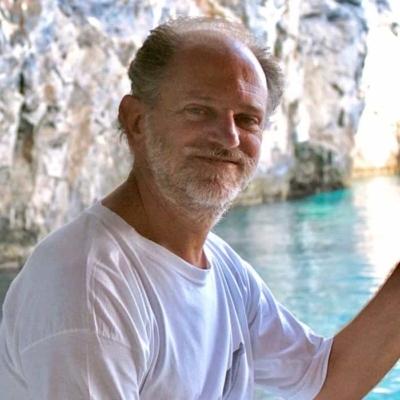
Dr Giuseppe Notarbartolo di Sciara
Giuseppe is a marine conservation ecologist with a PhD in marine biology from the Scripps Institution of Oceanography, University of California San Diego (1985), with a thesis on devil rays (family Mobulidae). He founded the Tethys Research Institute in Milano in 1986, where he spearheaded the creation of the world’s first high-seas marine protected area, the Pelagos Sanctuary, established in 1999 by a treaty amongst Italy, France and Monaco. He has served from 1999–2004 as the Italian Commissioner at the International Whaling Commission; from 2002–2010 as Chair of the Scientific Committee of ACCOBAMS; from 1997 to 2023 as Deputy chair of the IUCN SSC Cetacean Specialist Group; and from 2014 to 2022 as the Convention of Migratory Species CoP-appointed Councillor for Aquatic Mammals. He has taught science and policy of the conservation of marine biodiversity at the University Statale of Milan from 2007 to 2016. Currently, he co-chairs the IUCN Task Force on Marine Mammal Protected Areas (since 2013), where he had a leading role in the development of Important Marine Mammal Areas (IMMAs). More details can be found in www.disciara.org.

Dr Asia Armstrong
Asia is an Australian marine scientist with a particular passion for the conservation of threatened species, especially sharks and rays. She grew up on the east coast of Australia, in northern New South Wales, and spent all her spare time in and around the water. After some years exploring the world as a diver and traveller, she returned to university to gain her Bachelors in Marine Studies, where she obtained a first class Honours for her research on reef manta ray foraging requirements. During this time Asia worked with the Australian Marine Conservation Society, Australia’s largest marine advocacy group focussed on increasing protected areas and strengthening laws around threatened species management. Her doctorate examined the spatial ecology of manta rays in Australian waters, and she has been working with the multidisciplinary team at Project Manta for the past decade. Asia has vast experience in the collection and use of citizen science data, and engaging stakeholders and community members to get involved with research and conservation. She is a long-term council member of the Oceania Chondrichthyan Society and has collaborated with researchers from The Manta Trust, LAMAVE, and Conservation International across the Indo-Pacific region. Asia is excited to join the ISRA team to assist with Red List assessments and contribute to the conservation of shark and ray species globally.
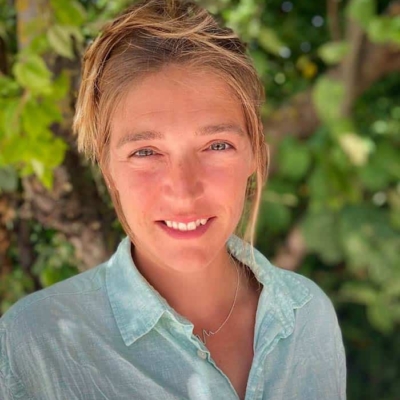
Amanda Batlle Morera
Amanda is a marine conservation biologist from Barcelona, Spain, and has been working in the marine field since 2007. She discovered her interest in marine conservation and scuba diving early in her career, working as a biology student in the underwater mapping of Ses Negres Marine Protected Area in Spain, graduating with an MSc in Sustainable Management of Coastal and Marine Ecosystems from the Universidad de Cádiz and a second MSc in Remote Sensing and GIS from the Universitat Autònoma de Barcelona. Since then, her focus has been on linking the fields of marine biology, sustainable management, spatial planning and mapping to promote the conservation of key species and habitats. For the last few years, Amanda has been working closely with multiple species of sharks and rays in some of the world’s most renowned hotspots. From filming bull sharks and whale sharks in Mexico to conducting daily field data collection, and educating tourists on respectful interaction guidelines with manta rays, whale sharks, and reef sharks in the Maldives. With more than 4,000 dives in the Mediterranean, Caribbean, Indian Ocean, and Sea of Cortez, she developed a multidisciplinary background as a Scuba Instructor, Marine Biologist, Underwater Videographer, non-governmental organisation manager, GIS, and remote sensing technician. She has contributed to the research, and conservation of seagrass and coralligenous habitats in the Aegean Sea and collaborated in the creation of the Medsea Alliance Atlas to track illegal trawling activities in Marine Protected Areas.
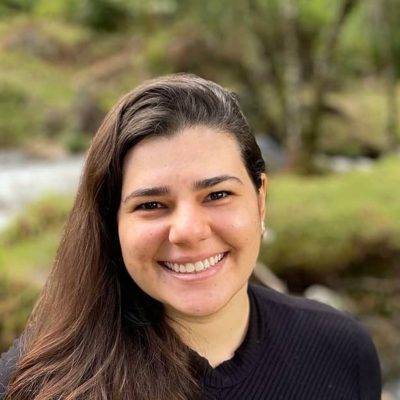
Dr. Vanessa Bettcher Brito
Dr Vanessa is a Brazilian researcher whose childhood was shaped by her strong connection to the beach, motivating her to pursue a career in marine biology. Her involvement in shark conservation began during a scholarship program in Australia, where she volunteered at the Australian Institute of Marine Science to work on socio-economic surveys related to shark diving tourism. After returning to Brazil, she delved into elasmobranch research, initially examining the sizes and capture locations of landed threatened sharks in Rio de Janeiro. Subsequently, she directed her focus toward Ginglymostoma cirratum at the Rocas Atoll, investigating population dynamics, distributions, and habitat-related behaviors. Furthermore, she served as a Research Assistant at a Marine Protected Area, contributing to the development of action plans for species conservation and delineating areas crucial for monitoring purposes. Her primary objective revolves around comprehending how habitats influence shark distribution while advocating for effective conservation strategies for endangered species. Vanessa holds a Ph.D. in Ecology and Evolution, complemented by a Bachelor’s degree in Environmental Sciences and a Master’s degree in Biological Sciences.

Ryan Charles
Ryan has a natural interest in marine megafauna, which led him to obtain a BSc in Marine Vertebrate Zoology and an MSc in Marine Biology. This gave him the opportunity to scratch his itch of curiosity whilst becoming confident in the scientific process. During his studies at Bangor University (Wales), he investigated a wide variety of ocean life, though Ryan oriented his research around elasmobranchs where possible. For example, for his degree theses, he investigated the impacts of ecotourism on sharks and rays, and the spatial-temporal variation in the common stingray Dasyatis pastinaca around the UK using opportunistic catch records. Ryan also observed elasmobranchs from trawl catches, dissected them within the laboratory, and analysed shark bycatch levels from tuna fisheries. Outside of university, at the British Antarctic Survey, he has recently researched British whaling activities (including the marine mammal catch) in the Arctic region. Ryan has also assisted various non-governmental organizations, and the IUCN Species Survival Commission Shark Specialist Group on various projects such as IUCN Red List of Threatened Species assessments. He endeavours to make a real contribution to shark conservation efforts, particularly for the most threatened species which require urgent help and attention.
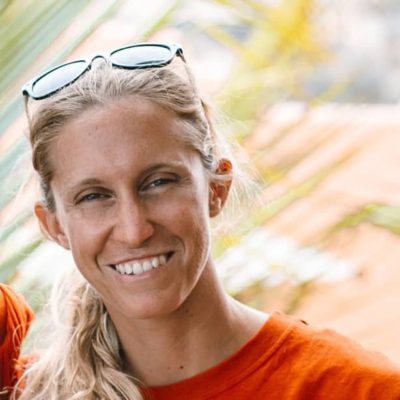
Marta Diaz Palacios
Marta is a Spanish marine biologist and co-founder of Mobula Conservation, a research organization committed to the study and conservation of mobulids in the Eastern Tropical Pacific. She earned her BS in Biological Sciences from the University of Madrid and La Laguna University in the Canary Islands, Spain. For her Master’s and PhD research at CICIMAR, Mexico (in collaboration with the University of California), Marta employed a multifaceted approach, utilizing acoustic telemetry, stable isotopes, photogrammetry, traditional tagging, and citizen science data to investigate the ecology and fisheries vulnerability of Munk’s Devil Ray in the Mexican Pacific. During her doctorate, she collaborated with various stakeholders leading to the creation of several management plans and codes of conduct for mobulids in Mexico and the identification of critical habitats for these species. She has broad field training, research experience, and has collaborated with international organizations in Brazil, Indonesia, New Zealand, and Ecuador. Marta has received several grants to support her work and education from international organizations such as The Explorers Club and The Walter Munk Foundation for the Oceans.
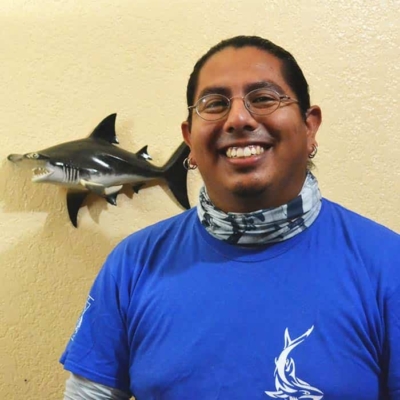
Dr Emiliano Garcia-Rodriguez
Emiliano is a Mexican marine ecologist focused on the conservation and sustainable management of chondrichthyans. He grew up in southeast Mexico, and since he was a child, he developed a fascination for sharks and rays landed by local fishers. This interest made him pursue a degree in Marine Biology. During his doctorate, he focused on understanding how juvenile white sharks were using a nursery area in the Northwest Pacific, using acoustic telemetry, chemical tracers, and local traditional knowledge from fishing communities. For the past thirteen years, he has been involved in interdisciplinary groups working for the management and conservation of sharks, especially in data-poor areas. His research has led him to work with government agencies, academics, fishers, tourist service providers, and non-governmental organizations to manage these species properly. He has worked closely with the Convention on International Trade in Endangered Species of Wild Flora and Fauna (CITES) National Authorities in Mexico and marine protected areas authorities to improve existing regulations in Mexico.
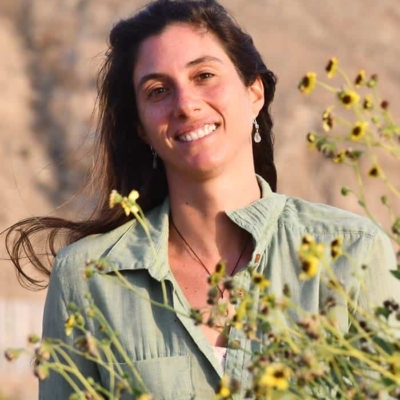
Adriana Gonzalez Pestana
Adriana is a coastal-marine ecologist and conservationist. Born and raised in Peru’s coastal capital, she nurtured a spiritual relationship with the ocean. She belongs to the first promotion of marine biologist in Peruvian history (2012). On a three-month internship in Galapagos marine reserve, she discovered her life-long journey to conserve the world’s most threatened marine predators. She holds an MS in Fisheries Biology and Management from James Cook University, Australia. For her undergraduate and master thesis, she studied the trophic ecology, nursery areas, and habitat suitability of juvenile smooth hammerhead sharks off northern Peru. For the last 10 years, she has been involved in the conservation of threatened shark and ray species through education and research, and has more than 20 scientific publications. Adriana is Adjunct Professor at Universidad Cientifica del Sur where she teaches future marine biologists. She has also used system thinking in complex small-scale fisheries in the Humboldt Current to identify leverage points for their transformation towards sustainability in Advanced Conservation Strategies and the Instituto Milenio en Socio-Ecología Costera. With fisher communities, she has developed a participatory fisheries monitoring system to empower them towards management. She is a former expeditionary to Antarctica. Adriana has been recognized by the national award “Outstanding Young Conservationist” and has received grants to support her work on research and education. She uses outdoor science-based activities and storytelling to promote environmental identity in children from coastal communities.
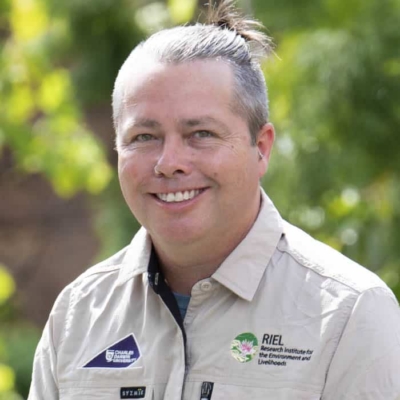
Dr Peter Kyne
Peter is a conservation biologist with interests in marine and freshwater systems, focusing on the collection of life history and ecological information to guide the management and conservation of biodiversity. He has a background in chondrichthyan fish (shark, ray, and ghost shark) biology, fisheries bycatch mitigation, and conservation, and has worked from freshwater systems to the deep-sea. Peter has participated in two decades of assessing extinction risk in sharks and their relatives, leading or co-authoring hundreds of IUCN Red List Assessments. He has served as Red List Authority Coordinator and Regional Vice-Chair (Australia and Oceania) of the IUCN Species Survival Commission Shark Specialist Group.
Peter works across Northern Australia and in Southeast Asia leading projects that aim to improve the understanding and management of data-poor and low abundance threatened sharks. He has focused research on highly threatened groups such as sawfishes, wedgefishes, and river sharks. Peter was lead author of the first Action Plan for Australian Sharks and Rays published in 2021. This book outlines the largest national or regional assessment of extinction risk for sharks to date and provides conservation and research needs for Australia’s diverse shark fauna.
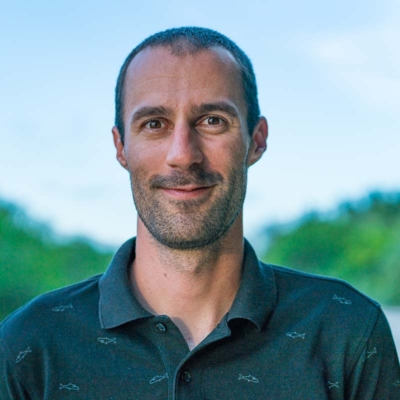
Dr Chris Rohner
Chris is a marine ecologist interested in better understanding threatened marine megafauna to help with their conservation. For the last decade, he has worked for a small research and conservation non-governmental organization and has led and collaborated on a variety of ecological studies, particularly focussing on gaining information that is needed to enhance the conservation of sharks and rays. Most of his work has been on whale sharks and manta rays, and other marine megafauna, including billfish, turtles, and tuna. Chris has extensive field experience, having worked on research projects around the world. Much of his work has been on tracking the movements of sharks and rays, investigating their feeding ecology, and modelling trends in their abundance. While in-water field work is always a highlight, Chris also enjoys data analyses and he has written or co-authored over 40 scientific journal articles and book chapters on sharks and rays.

Elena Politi
Elena graduated with a degree in Biology with a thesis focused on the feeding ecology of the Blue Shark in the Adriatic Sea. Once finished, she immediately dedicated her work to cetaceans. She collaborated in a full-time capacity with the Tethys Research Institute from 1991 to 2010, holding, among others, the position of Vice President (1996–2000). In 1993, she also founded the Ionian Dolphin Project, a Tethys long-term project on the socio-ecology of two resident coastal dolphin populations in the Ionian Greece, which she directed until 2003. Since 2015 she has been working as freelance web designer, managing several website projects related to marine sciences and to Tethys’ activities. In particular, in 2016 she developed the GIS web application for mapping Important Marine Mammal Areas. Based on this previous experience, in 2021 she began her involvement with the Important Shark and Ray Areas (ISRA) project to develop, program, manage, and maintain the website and the ISRA e-atlas.

